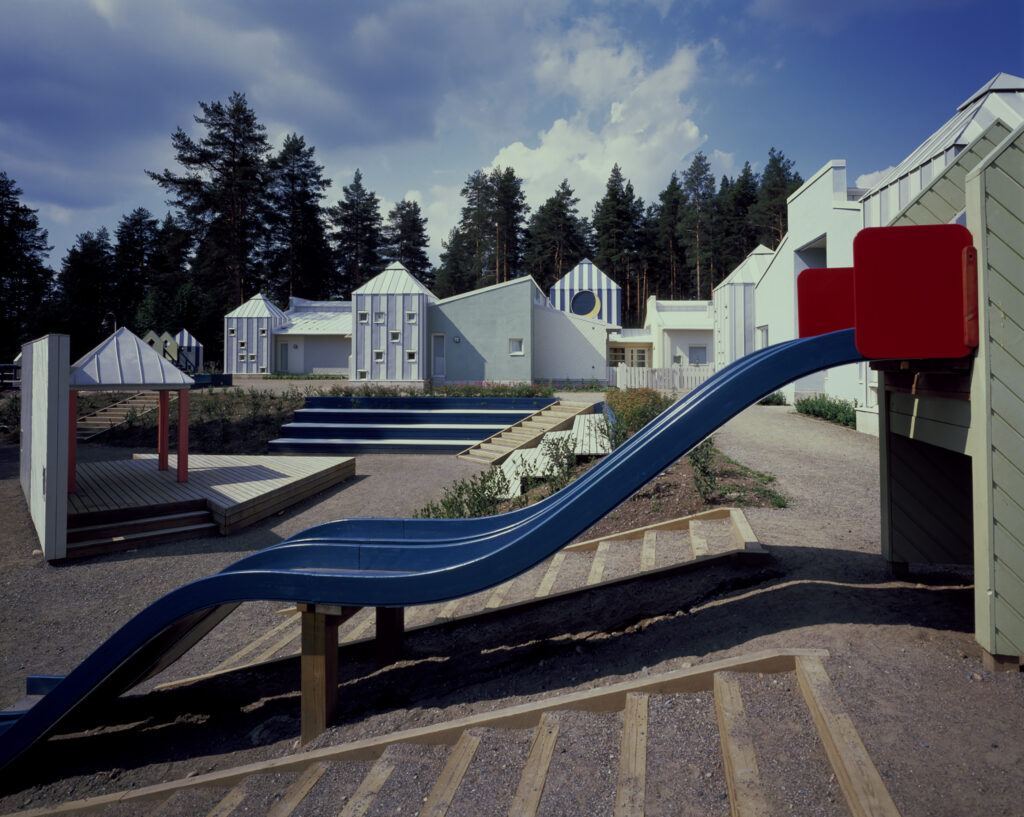What Sets the Finnish Architecture Scene Apart from the United States?
Henrik Ilvesmäki studied architecture at Harvard University for four years. He noticed a marked difference between the United States and his native Finland in the dynamics between architectural academia and practice. This difference has a potentially profound impact on the future of the field in the two countries.
Architectural academia and practice have separated from each other in the American architectural scene. Where design practices serve as the herald of capital, academic training functions as the driving force behind the evolution of architectural theory. The academia has to keep reinventing itself to be able to face the challenges of any given time in a credible manner. The verbalization of design work takes on a great value, which further elevates architectural discourse. The aim is to refine new design methods and solutions, which then also need to be conceptualized to enable a critical examination of the said methods and solutions.
From the Finnish perspective, the American academia may appear to have completely disconnected from the everyday sphere of an architect’s work. I believe that the difference in views comes down to the strong practice orientation of Finnish architectural schools. The design projects included in a Finnish master’s programme are comparable to Finnish design competition entries, while in the United States, it is the bachelor’s projects that can serve a similar function. In Finland, the aim is to provide training that directly benefits the field, which is why the instruction is more practice-oriented. In the United States, master’s-level education relies on the design methods of specific professors and on examining the social, political, economic and architectural challenges that the methods are intended to resolve. Innovative solutions arising from these methods are preferred, even when a functioning practical solution to the same design issue already exists. The process creates a steady stream of inventions, some of which always manage to yield results that the world has never seen before. Eventually, the innovations make their way to the Finnish architectural scene in the form of various trends. Our position at the tail end of this process makes it more difficult for us to be active in the international scene because the original logic behind the advent of these trends tends to remain obscure. The trends are well-known among international operators, however, and to be able to compete with them would require a similar level of knowledge and insight from Finnish architects.
The trends are well-known among international operators, and to be able to compete with them would require a similar level of knowledge and insight from Finnish architects.
What, then, has caused the separation of the American academia and practice? The architectural practices in the country are usually highly specialized or have grown into large corporations, which seems to be the law of the land in many other fields as well. The vast domestic market offers ample commercial opportunities, and, therefore, the continuous production of architectural innovations maintained by the schools of architecture serves to shake up established conventions and meet new niche demands. This is why large corporations are interested in recently graduated architects who are trained in innovation – if necessary, companies can always teach new recruits any practical skills that they may be lacking. Of course, members of the architectural academia also have to compete with each other to further their own academic careers, which is why some of the processes being taught are purely self-serving.
In the United States, young architecture practices are not established as a result of design competition wins, as was the case in Finland up until a few years ago. Instead, new practices are created either through competitions with an artistic emphasis or as a result of start-up activities. Architectural start-ups typically arise to meet the needs of a specific geographic market or specialize in commercializing specific typologies, while the architects who win artistically ambitious competitions appeal to an elite clientele. Marketing and networking is key in America, so finding the right client for realizing a breakthrough project is of critical importance. However, the opportunities to do just that are dwindling in the States, and even Harvard alumni are finding it difficult to find projects that could open up the kinds of career paths that the previous generations were able to carve out for themselves.
The continuous production of architectural innovations maintained by the schools of architecture serves to shake up established conventions and meet new niche demands.
In Finland, the number of architectural competitions, and thereby their role in offering job opportunities to new studios, have diminished in recent years. At the same time, mergers and buyouts have increased the size of existing firms. The current reference and tendering procedures support established operators, which increases the power of large companies. This, combined with the fact that Finnish firms tend to only be led by their founders and with the low level of specialization among the architectural profession, could indicate that it is becoming more difficult for the field to renew itself. Architectural practice in Finland may then become shackled to the market in the same way as in the United States.
Similar solutions to the problem are not on offer, however. The small Finnish market and the limited construction methods and products make it difficult to break the mould of established practices. There is also no culture of innovation-oriented academic design. Furthermore, the power dynamics that develop between and within architecture offices restrict the career opportunities of individual architects.
In the States, the decrease in career opportunities has led architects to pursue other fields, in real estate, strategic consulting and technology in particular. The upheaval is of such a magnitude that it is also shifting the focuses of the architectural academia. At Harvard, architecture is increasingly viewed as part of a larger whole, and new syllabi are encroaching on the traditional scope of the degree programmes. The traditional job description of an architect is seen as an opportunity that is open for a shrinking, privileged group, also making it less desirable as a career option. The conflicting reality is that the future of the traditional architecture profession is in question, even though architects have ventured further and further afield, to completely new avenues of work. ↙
HENRIK ILVESMÄKI graduated as an architect from Aalto University and has since completed two post-professional master’s degrees in architecture and design thinking at Harvard University. He is currently heading the architecture and consulting agency Studio Ilvesmäki.




